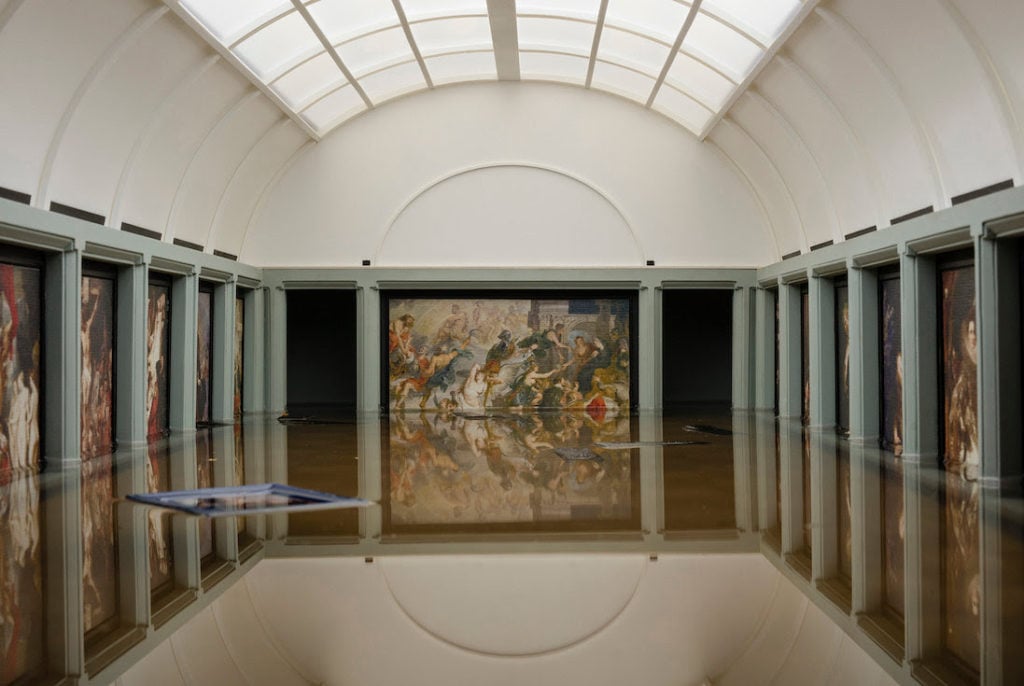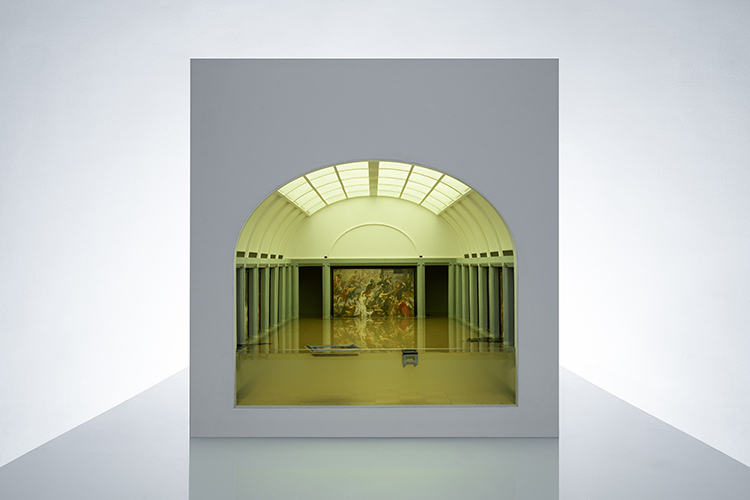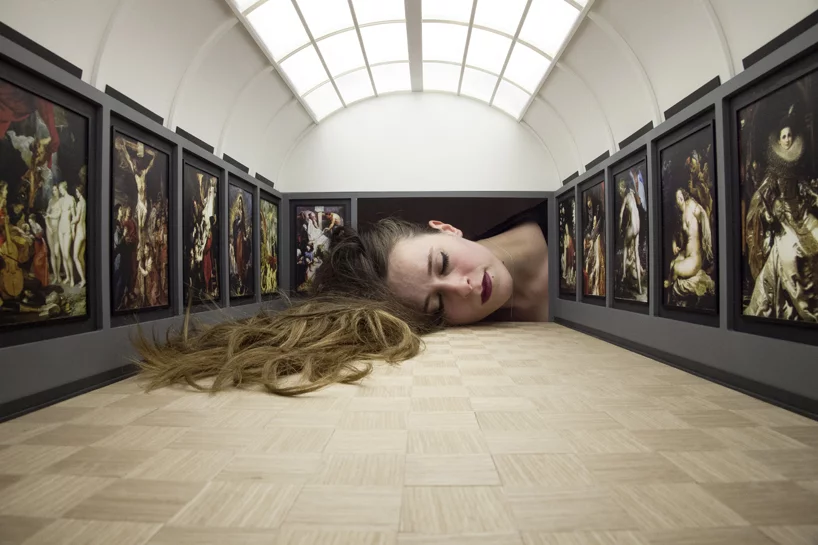Art Fairs
This Artist’s Vivid, Consciousness-Raising Video of a Flooded Louvre Is a Hit at the Armory Show. Here’s How He Did It
The chilling video speaks to the impending dangers of climate change.

The chilling video speaks to the impending dangers of climate change.

The video shows a disaster: water rushing into a gallery, washing across the floor and rapidly rising in a room of Old Master canvases. The Louvre, one of the hallowed halls of Western civilization, is flooding. But despite the increasing number of extreme weather events caused by climate change, the video is only a work of art, depicting an event that hasn’t happened at the Paris musuem—but someday could.
“About two years ago, the Louvre actually got flooded by the Seine,” Alfred Kornfeld of Berlin’s Galerie Kornfeld, told Artnet News. “It was the result of very, very heavy rain.”
At the time, the museum closed its lower level as a precautionary measure, relocating some 35,000 works to higher ground. Nothing was damaged, but Georgian artist Tezi Gabunia couldn’t help imagining the worst. Her work, Breaking News: The Flooding of the Louvre, is a warning, both of the dangers of climate change, a force already unleashed on the world, and of the evils of fake news and the dissemination of misinformation.
“This is fiction, but it could be true,” said Kornfeld. “People see and say ‘Where is that? Is it Venice? When did this happen?'”

The Galerie Medicis, featuring Peter Paul Rubens’s Marie de’ Medici Cycle, in the Richelieu wing at the Louvre in Paris Photo by Matt Biddulph courtesy of Wikimedia Commons.
Seeing one of the world’s most famous art museums underwater and historical masterpieces destroyed is deeply upsetting, and that’s the point. Breaking News drives home the notion that if the Louvre, an archive of Western civilization, is at risk, then the dangers of climate change are deadly serious—and not at all fake news, as the Republican party and President Donald Trump would have the public believe.
The piece is one of the highlights of New York’s 2020 Armory Show, stopping visitors in their tracks in the Focus section, which was curated by Jamillah James on Pier 90.
Breaking News has two parts: the video itself and the scale model in which it was filmed. By making the diorama component part of the final piece, Gabunia eliminates any confusion about the authenticity of the video.

Tezi Gabunia, Breaking News: The Flooding of the Louvre (2018–20). Photo courtesy of Galerie Kornfeld, Berlin.
On the fair’s opening day, one of the work’s three editions, priced at €29,000 ($32,400) had already been snapped up. Another collector tried to buy just the video component, but the gallery refused. “The model is an integral part of the piece,” said Kornfeld, noting that the video alone could be mistaken for a real event, especially if disseminated on social media.
Ingeniously, the model floods and then drains continuously, a disaster on endless loop. Gabunia, who is also an architect, had already created a model of the Louvre’s Galerie Medici, which houses Peter Paul Rubens’s Marie de’ Medici Cycle, for his 2016 series “Put Your Head Into Gallery.” In the surreal photographs, famous art spaces are disrupted by giant heads, peering sideways into the exhibitions.

Tezi Gabunia, Put Your Head Into Gallery (2016). Photo courtesy of Galerie Kornfeld, Berlin.
Gabunia is now recreating the model at full scale for an upcoming exhibition in his native country, to be presented at Window Project during the Tbilisi Art Fair in Georgia in May, as a collaboration with Galerie Kornfeld. The space will be massive, 65 feet long and flooded with water.
“He wants to take this video into reality,” said Kornfeld.
Even in miniature, Breaking News presents a disturbing scene, especially in the context of the growing coronavirus pandemic, which saw the Louvre shut down earlier this week. The work undoubtedly touches a nerve, tapping into society’s growing existential angst as we face disease, political uncertainty, and the dangers of an increasingly volatile planet.
The threat of climate change and of coronavirus are more similar than you might think. “We know it is there, we’re discussing it, but we don’t see it,” said Kornfeld. “We’re still of this belief of ‘It’s all fine’—although we know it’s not, we still feel it’s all fine.” Breaking News illustrates that still invisible reality in dramatic fashion.
The Armory Show is on view at Piers 90 and 94 on 12th Avenue between West 50th and 54th Streets, New York, March 6–10, 2019.